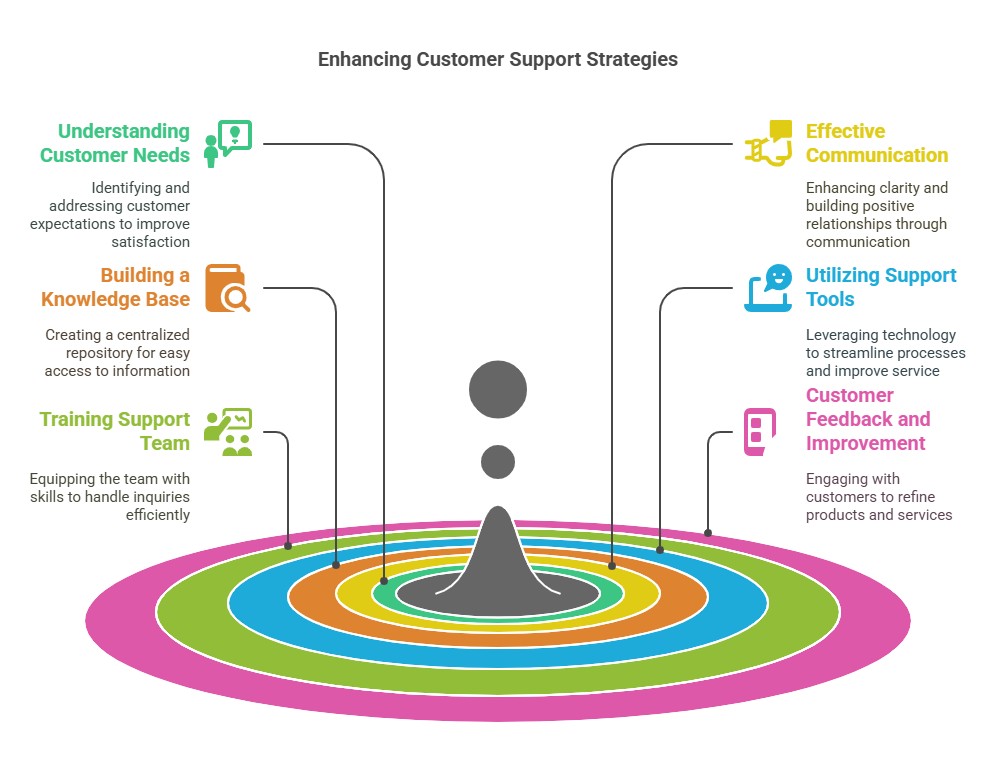Contents
Most information product creators underestimate the importance of effective customer support. Providing excellent support not only enhances user experience but also builds trust and loyalty among your audience. In this guide, you’ll learn necessary strategies to streamline your customer support process, handle inquiries efficiently, and transform challenges into opportunities. From setting up support channels to responding to feedback, you’ll discover actionable tips to ensure your customers feel valued and supported throughout their journey with your products.
Key Takeaways:
- Provide clear and concise documentation to empower customers before they reach out for support.
- Be responsive and empathetic in your communication to build trust and loyalty with your customers.
- Utilize customer feedback to continuously improve your support processes and enhance the overall product experience.
Understanding Customer Needs
For your information products to succeed, you must first understand the needs and expectations of your customers. This involves actively listening to their feedback, analyzing support inquiries, and adapting your offerings accordingly. By identifying what your customers truly value, you can enhance their experience and build lasting relationships, which ultimately leads to higher satisfaction and loyalty.
Identifying Common Issues
For effective customer support, it is vital to identify common issues that frequently arise among your users. By analyzing support tickets and feedback, you can pinpoint recurring problems, allowing you to streamline solutions and create targeted resources that address these challenges. This proactive approach not only improves user satisfaction but also reduces the volume of incoming inquiries.
Creating Customer Personas
With a clear understanding of your customer base, you can create detailed customer personas that represent different segments of your audience. These personas help you visualize their demographics, preferences, and pain points, enabling you to tailor your support strategies more effectively. By addressing specific needs outlined in these personas, you enhance the overall customer experience and ensure your support is relevant and impactful.
Customer personas are fictional yet data-driven representations of your ideal users, based on insights from research and analytics. They embody the characteristics, motivations, and behaviors of your target audience, allowing you to personalize your approach to support. By regularly updating these personas, you can stay aligned with customer expectations and make informed decisions about your information products and services.
Effective Communication Techniques
One of the most vital aspects of customer support is employing effective communication techniques. These methods not only enhance the clarity of your interactions but also foster a positive relationship with your customers. By improving how you convey information, you can reduce misunderstandings and answers to queries more swiftly, ensuring that your customers feel valued and understood.
Active Listening Skills
Assuming that you are actively listening means fully focusing on the customer’s words, and not just waiting for your turn to speak. This involves acknowledging their concerns, repeating key points, and asking clarifying questions to ensure you fully understand their issues. By doing so, you reinforce a sense of trust and connection, which makes customers more likely to engage and share detailed information about their needs.
Clear and Concise Responses
To communicate effectively, aim to provide clear and concise responses that directly address your customer’s queries. Avoid lengthy explanations or jargon; instead, focus on delivering information that is straightforward yet comprehensive. This approach not only aids in comprehension but also respects your customer’s time, leading to a more efficient support experience.
Responses that are clear and concise are important in reducing customer frustration. When you provide information in a straightforward manner, customers can quickly grasp the solution or guidance you are offering. Use simple language, bullet points, or numbered steps when necessary. If a response requires additional detail, reference specific resources or documents they can refer to, ensuring assistance is readily accessible without overwhelming them with information.
Building a Knowledge Base
Once again, developing a comprehensive knowledge base can streamline your customer support process. By compiling a centralized repository of information about your products, you make it easier for your customers to find answers independently. This not only enhances the overall user experience but also reduces the volume of inquiries your support team receives, allowing them to focus on more complex issues.
Frequently Asked Questions
Knowledge thrives on clarity, and creating a FAQ section is an effective first step in your knowledge base. This section should address the most common queries your customers have, ensuring they can easily locate answers and gain confidence in using your products.
Resource Guides and Tutorials
Knowledge is further amplified through resource guides and tutorials, which provide in-depth insights into using your information products effectively. These resources can help you guide customers through complex processes and enhance their experience with your offerings.
For instance, you could create video tutorials demonstrating how to navigate your product’s features, or written guides that outline best practices and troubleshooting tips. Such resources not only empower your customers, but they also position you as a knowledgeable authority in your field, encouraging long-term loyalty and satisfaction.
Utilizing Support Tools
To effectively manage customer support for your information products, consider leveraging various support tools available in the market. These tools can streamline your processes, enhance communication, and ultimately improve customer satisfaction. For comprehensive guidance, check out The Handbook for Mastering the Art of Customer Support.
Helpdesk Software
Assuming you implement helpdesk software, you can centralize all your customer inquiries in one platform. This allows you to track, prioritize, and resolve issues efficiently. Moreover, it provides you with valuable analytics to understand common customer concerns, thus improving your product offerings over time.
Chatbots and Automated Responses
For your information products, integrating chatbots and automated responses can greatly enhance your customer service experience. This technology engages customers instantly, providing them with immediate assistance or guiding them to relevant resources without the need for human intervention.
This allows you to address basic queries promptly while freeing up your team to focus on more complex issues. Additionally, chatbots can be programmed to learn from interactions, becoming increasingly effective over time. By utilizing chatbots, you ensure your customers feel supported, which can lead to increased loyalty and satisfaction.
Training Your Support Team
Despite the quality of your information products, effective customer support is a key factor in retaining satisfied customers. Training your support team ensures they possess the necessary knowledge and skills to handle inquiries efficiently. Providing comprehensive training will empower your team to address issues proactively, leading to improved customer satisfaction and loyalty.
Ongoing Education and Workshops
There’s always new information and technologies emerging in your industry, making ongoing education important for your support team. Regular workshops and training sessions not only keep your team updated but also foster a culture of continuous improvement. Your commitment to their professional growth reflects positively on your brand, enhancing the support experience for your customers.
Role-Playing Scenarios
Some of the most effective training involves role-playing scenarios that simulate real customer interactions. This exercise prepares your team to think on their feet and develop confidence in handling various situations.
Team members can take on different roles, acting as both the support representative and the customer. By engaging in these scenarios, your staff learns how to articulate responses, manage difficult conversations, and address customer concerns. This practice can significantly enhance their problem-solving skills and create a more empathetic approach to customer relations.
Customer Feedback and Improvement
Now is the time to actively engage with your customers to enhance your products. Utilize their insights to better understand their needs and preferences, which can help refine your offerings. Additionally, familiarize yourself with methods on how to handle customers who are looking for a product or service that you don’t offer for improved customer satisfaction.
Collecting Feedback
Any interaction with your customers is an opportunity to gather feedback. Create surveys and encourage open dialogues through emails or social media to gain insights into their experiences. This not only helps in understanding their concerns but also demonstrates that you value their opinions.
Analyzing and Implementing Changes
The next step is to take the feedback you’ve collected and analyze it for patterns and trends. Look for common issues or requests that arise and prioritize them based on impact and feasibility.
To effectively implement changes, take a systematic approach. Start by categorizing feedback into actionable items and setting timelines for improvements. Involve your team in discussions to brainstorm solutions, and communicate these developments to your customers to show that their input is instrumental in shaping your products. This transparency fosters loyalty and enhances customer satisfaction.

To wrap up
From above, you should now understand that effective customer support for your information products hinges on clear communication, timely responses, and a comprehensive knowledge base. By proactively addressing common concerns and providing multiple support channels, you can enhance customer satisfaction and foster loyalty. Tailoring your approach based on customer feedback will help you stay ahead of issues and continuously improve the support experience. By implementing these strategies, you can ensure that your customers feel supported and valued, ultimately driving the success of your information products.








